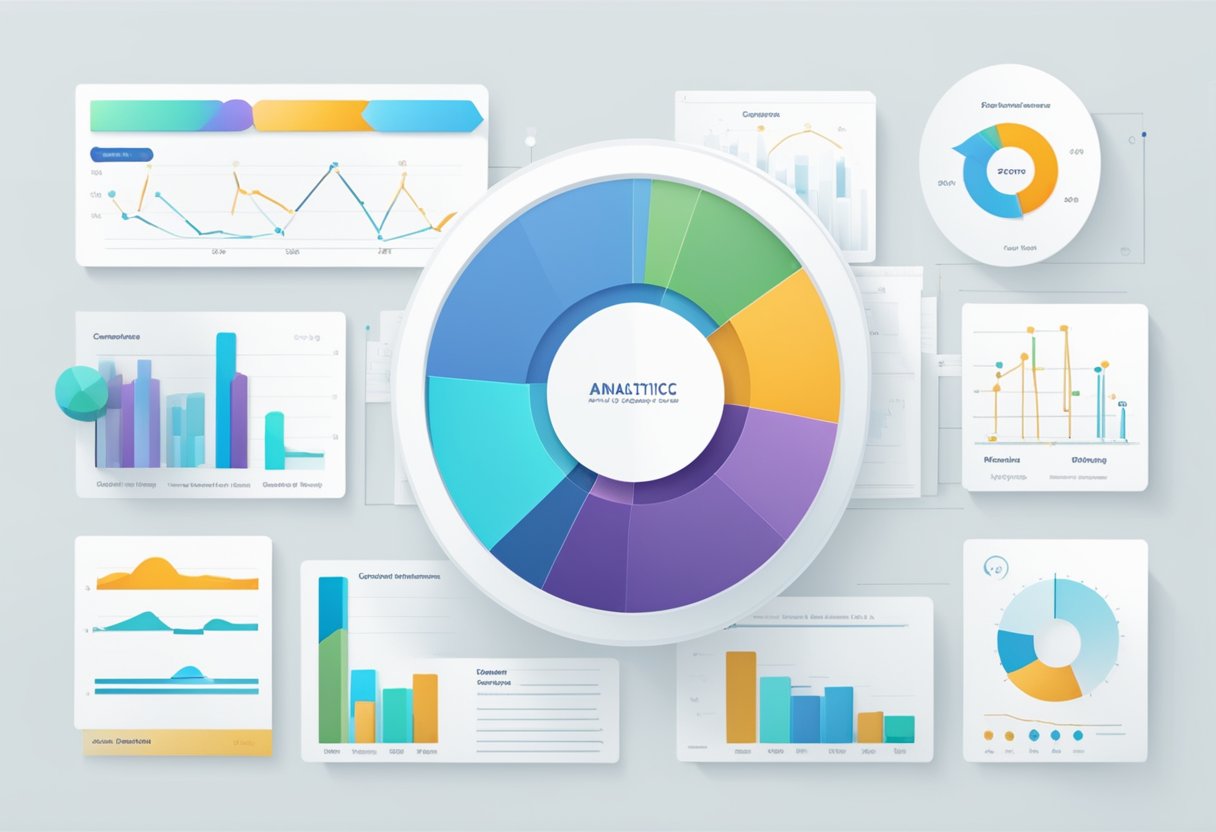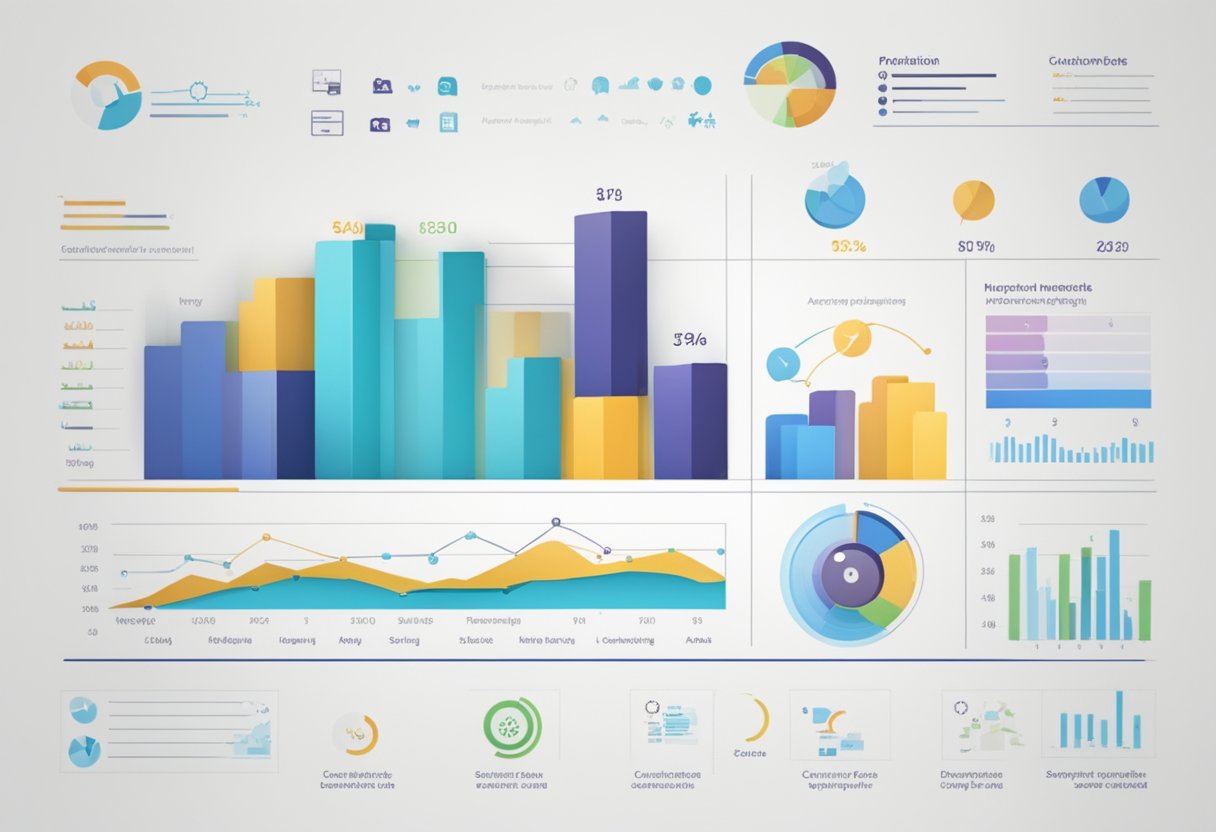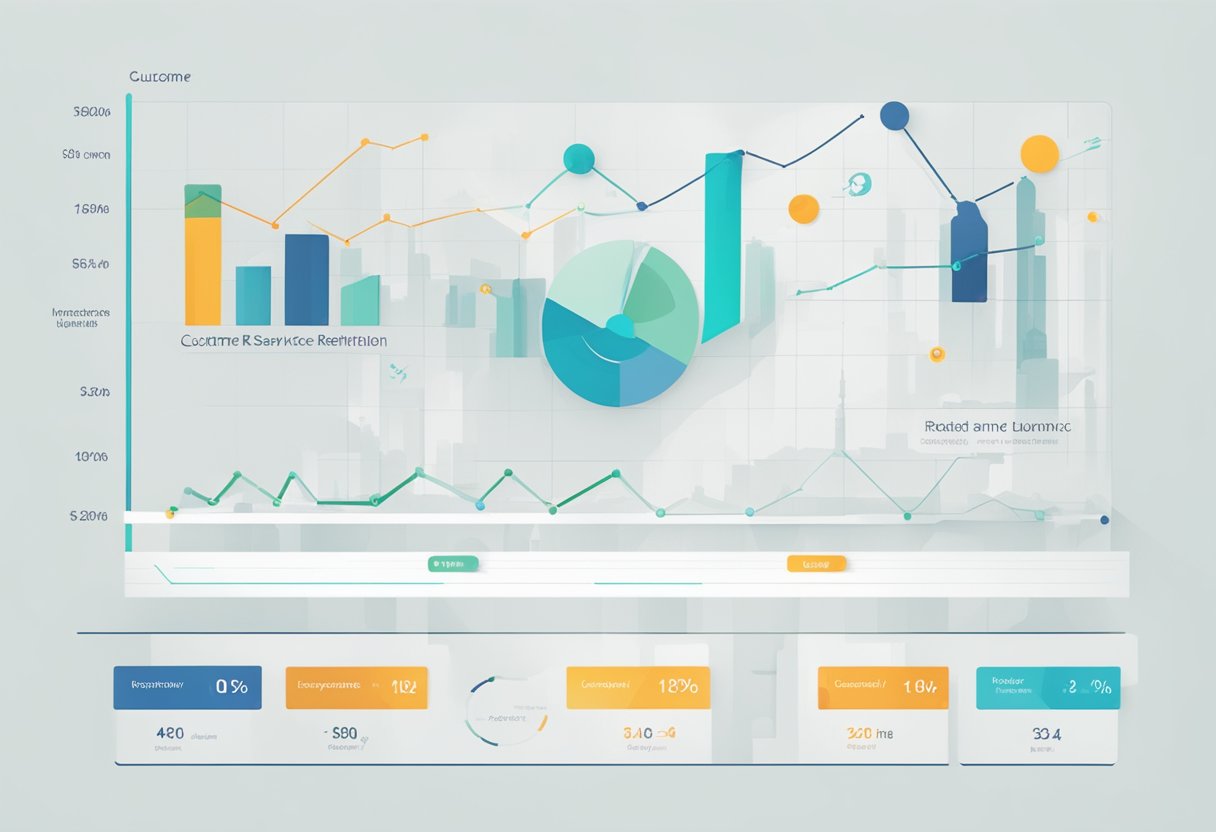Customer Service Analytics and Metrics: Boosting Satisfaction with Data-Driven Insights
Understanding customer service analytics and metrics is crucial for businesses aiming to enhance their customer support and overall customer experience. These metrics are pivotal, as they provide data-driven insights into customer interactions, service quality, and support effectiveness. Tracking various customer service metrics allows companies to pinpoint strengths and weaknesses in their current customer support framework and make informed decisions to improve their service delivery.

Key performance indicators in customer service can include a range of metrics such as response times, resolution rates, customer satisfaction scores, and net promoter scores. By leveraging this data, customer service teams can optimize their operations, ensuring issues are resolved rapidly and efficiently. Analyzing customer service metrics also aids in understanding customer needs and expectations, paving the way for more personalized and proactive service strategies.
The power of customer service analytics lies in its ability to transform raw data into actionable insights. Companies harnessing this information can tailor their customer service approaches to meet and exceed customer demands, ultimately fostering loyalty and driving business growth. With an emphasis on continuous improvement, customer service analytics act as the compass guiding businesses towards superior service and a more robust bottom line.
Understanding Customer Service Analytics
In the ever-evolving customer service landscape, analytics plays a pivotal role in extracting insights from interaction data to improve both service delivery and customer satisfaction.
Importance of Analytics in Customer Service
Using Customer Service Analytics (CSA) is crucial because it gives businesses the power to transform raw data from customer interactions into actionable strategies. By analyzing data, companies can identify patterns and trends that help them understand customer behavior and preferences. These insights enable businesses to make informed decisions that can lead to increased customer loyalty and better resource allocation. For example, analytics might uncover which service channels are most efficient or what types of queries are most common, allowing for targeted improvements.
Key Concepts and Terms
To get a firm grip on CSA, it’s essential to comprehend a few key concepts:
- Data: This is the raw input that CSA works with, comprising information from a variety of sources like support tickets, surveys, and social media interactions.
- Metrics: These are the quantifiable measures that organizations use to assess, compare, and track performance over time. Think of metrics like customer satisfaction scores or average handling time.
- Benefits: Leveraging CSA can lead to numerous benefits, including heightened customer satisfaction, streamlined operations, and lesser service costs.
The insights gained through analyzing customer service data help reveal use cases where service can be augmented. Companies may find opportunities to automate certain responses or discover that additional training could boost resolution rates on the first contact.
In customer service, success is often grounded in understanding. CSA offers a path to that understanding through its structured approach to data.
Essential Metrics for Evaluating Performance
To effectively gauge the performance of their customer service, businesses track essential metrics. These indicators are vital for understanding satisfaction levels, operational efficacy, and the quality of service delivered.
Customer Satisfaction Metrics
Customer Satisfaction Score (CSAT) assesses immediate customer happiness with a product or service. It typically involves a simple survey with a rating scale. Net Promoter Score (NPS) is broader, measuring willingness to recommend the service to others—a strong indicator of long-term satisfaction.
Operational Efficiency Metrics
Operational proficiency is monitored through First Response Time (FRT), which is the duration before customers receive their initial reply. Another key metric is Average Resolution Time, the average time required to solve customer issues. These metrics help pinpoint operational slack and customer expectations.
Service Quality Metrics
Businesses look at Customer Effort Score (CES) to understand the ease with which customers can get their issues resolved. Service quality is also reflected in the rate of resolved issues, a clear metric that speaks to the efficacy and skill of the service team in addressing customer problems.
Leveraging Data to Assess Customer Satisfaction
In today’s digital era, businesses thrive by closely monitoring customer satisfaction. With the right data, companies can pinpoint what’s working and what needs improvement. Let’s look at three key metrics used to gauge customer satisfaction.
Net Promoter Score (NPS)
Net Promoter Score (NPS) is a metric for assessing loyalty and overall customer sentiment toward a brand. It relies on a single question: How likely are you to recommend our company/product/service to a friend or colleague? Respondents give a rating from 0 (not at all likely) to 10 (extremely likely). These responses classify customers into Promoters (9-10), Passives (7-8), and Detractors (0-6), making it easy for businesses to track and evaluate their performance through customers’ eyes.
Customer Satisfaction Score (CSAT)
Customer Satisfaction Score (CSAT) offers a snapshot of customer contentment with a product or service at a specific interaction or touchpoint. Customers express their satisfaction on a scale, typically from 1 (very unsatisfied) to 5 (very satisfied). This score represents the percentage of customers who rate their satisfaction at the higher end of the scale, giving businesses an immediate sense of customer perceptions after interactions.
Customer Effort Score (CES)
Finally, Customer Effort Score (CES) measures the ease of customer experience with a company’s product or service. It assesses how much effort a customer had to exert to have their issue resolved, their question answered, purchase made, or service received. The CES is often phrased as a statement like The company made it easy for me to handle my issue, with customers rating agreement on a numerical scale. Lower scores indicate a seamless customer experience, which is key to fostering loyalty.
Sales and Marketing Insights through Service Analytics

Customer service analytics tools provide businesses with the capability to analyze vast amounts of customer data, translating into valuable insights for both sales and marketing strategies. They turn every interaction into an opportunity to learn and improve business processes, thereby driving both revenue and brand growth.
Cross-Selling Opportunities
By examining past customer interactions through customer service analytics, sales teams can identify trends and preferences that indicate potential cross-selling opportunities. For instance, if they notice a group of customers frequently inquiring about a specific product feature, this could signal interest in a complementary product. Effective analytics let businesses pinpoint these opportunities, resulting in tailored offers that can boost sales and enhance the customer experience.
Marketing Campaign Feedback
Through the analysis of customer feedback and survey data, marketing teams gain direct insights into the reception of their campaigns. Service analytics can shed light on what’s resonating with customers or reveal areas that need adjustment. By actively monitoring customer satisfaction scores and feedback on support channels, businesses can iterate on their marketing strategies in real time, ensuring that campaigns are more aligned with customer needs and expectations, which in turn can have a positive effect on the brand’s reputation and overall business results.
Optimizing Customer Support Operations

To sharpen the efficiency of customer support, teams concentrate on key operational metrics like ticket volume and average handle time. Balancing these factors helps to manage workload and reduce backlog.
Ticket Volume Management
Ticket volume—essentially the number of customer inquiries received—provides a direct lens into the workload faced by support teams. A high ticket volume can indicate either a thriving product interest or prevalent user issues. Efficiently managing this volume requires strategies such as:
- Prioritization: Sorting tickets based on urgency and impact.
- Automation: Using bots for common queries to reduce human handling.
- Routing: Directing tickets to the most capable agents.
Average Handle Time
Average handle time (AHT) is the average duration it takes for a support representative to resolve a ticket, starting from the initial interaction until a resolution is found. Keeping AHT in check ensures customers aren’t left waiting, maintaining satisfaction and loyalty. To optimize AHT, consider the following tactics:
- Training: Equip agents with comprehensive knowledge.
- Resources: Provide instant access to information databases.
- Analysis: Regularly review calls and chats to identify time-saving opportunities.
Boosting Customer Retention and Loyalty

Effective customer retention and loyalty strategies are crucial for the longevity and profitability of a business. Companies need to monitor specific metrics and employ targeted approaches to reduce customer churn and improve retention.
Churn Rate Analysis
Churn rate is a critical metric in understanding how many customers a company loses over a given period. A high churn rate indicates that a business might be struggling to meet customer needs or faces stiff competition. To analyze churn, companies need to track the number of customers at the beginning and end of a period, noting how many have left. For example, if a company starts the quarter with 500 customers and ends with 450, the churn rate can be calculated as:
Churn Rate = (Number of Customers Lost / Number of Customers at Start) * 100
This figure should be closely monitored and efforts made to keep it as low as possible.
Customer Retention Strategies
Implementing effective customer retention strategies involves understanding customer needs and delivering value consistently. Here are a few strategies that can bolster customer loyalty:
-
Personalization: Tailoring experiences to individual customer preferences shows that a company values their business and understands their unique needs.
-
Quality Customer Service: Providing excellent customer service can lead to positive word-of-mouth and repeat business. It’s essential to resolve issues promptly and effectively.
-
Loyalty Programs: Reward loyal customers with discounts, exclusive offers, or points systems to keep them engaged and appreciative of the value the company provides.
-
Regular Communication: Sending personalized emails, newsletters, or updates can keep the brand top-of-mind for customers.
The Customer Retention Rate (CRR) is another metric to focus on; it’s a percentage that represents the number of customers a company retains over a specific timeframe. Increasing CRR is a clear indicator of successful retention strategies.
To improve customer retention, businesses should consistently evaluate the effectiveness of these strategies and adjust based on customer feedback and behavior. Successful retention efforts not only reduce churn but also foster a sense of loyalty that can turn customers into brand advocates.
Measuring the Impact of Help Desk and Support Teams

Accurately gauging the effectiveness of help desk and support teams is crucial for improving customer service operations. Key performance indicators (KPIs) such as the First Contact Resolution Rate and the Average Ticket Handling Time give managers clear insights into how well their teams are performing and where there is room for improvement.
First Contact Resolution Rate
The First Contact Resolution Rate (FCRR) is a vital metric that measures the percentage of issues resolved on the first interaction with the customer. High FCRR indicates that support teams are efficient and equipped to handle customer inquiries without escalation. This metric directly correlates with customer satisfaction, as customers generally prefer their issues to be resolved quickly and without the need to follow up.
- Calculation: ( \frac{\text{Number of tickets resolved on first contact}}{\text{Total number of tickets}} \times 100 )
Average Ticket Handling Time
On the other hand, the Average Ticket Handling Time is a measure of the average time it takes for a support team to resolve a customer issue. This includes the entire duration from when a ticket is opened until it is resolved. A lower average time often indicates a more agile and responsive support team, but it’s crucial that the quickness doesn’t compromise the quality of the resolution.
- Calculation: ( \frac{\text{Total time to resolve tickets}}{\text{Number of tickets resolved}} )
By analyzing both the First Contact Resolution Rate and the Average Ticket Handling Time, companies can make data-driven decisions to enhance the effectiveness of their help desk and improve overall customer experience.
Strategies for Effective Communication and Service

Effective customer service is the backbone of a thriving business. A focus on enhancing communication strategies and service delivery helps in meeting customer expectations and improving overall satisfaction.
Preferred Channels and Automation
Customers often have a preferred communication channel when it comes to interacting with service teams. Whether it’s phone, email, live chat, or social media, businesses need to streamline their service across these channels. Utilizing automation can help in this aspect, directing customers to the appropriate channel based on their inquiry type. This not only boosts productivity but ensures that customers receive the support they need efficiently. For instance, a customer service communication strategy should leverage real-time tools like live chats or chatbots to offer quick and accurate responses, guiding customers through straightforward issues without the need for human intervention.
Multilingual and Multilocational Support
Considering language and location is vital in customer service. Providing multilingual support helps to remove barriers, allowing businesses to connect with a wider audience in their preferred language. It’s a sign of respect and attention to detail that can enhance brand loyalty. Companies should also consider a service model that supports multiple locations efficiently to meet the needs of a global customer base. For example, having customer service representatives who understand local cultural nuances can significantly improve the quality of service delivered. Customers often feel more at ease when they’re able to receive support in their native language from someone who understands their culture and regional specificities.
The Role of Technology in Customer Service

Technology has revolutionized customer service by enabling more effective management of customer interactions and providing valuable insights into consumer behavior.
CRM and Service Software
In the world of customer service, CRM (Customer Relationship Management) systems are the backbone, offering a single repository for all customer interactions. Whether it’s a phone call, email, or live chat session, CRMs log these touchpoints, ensuring that service teams have the complete context before engaging with a customer. This fosters customer success by enabling personalized support that is informed by the customer’s history and preferences. Companies like Salesforce and HubSpot have become industry standard-bearers for CRM and service software.
Key aspects of CRM systems:
- Data centralization: Consolidates customer data from all touchpoints.
- Interaction tracking: Records every interaction for personalized support.
Analytics and Reporting Tools
Analytics and reporting tools take customer service to the next level by translating data into actionable insights. These tools scrutinize every aspect of the customer journey, identifying areas for improvement and empowering agents with data-driven guidance. They generate customer service reports, highlighting key performance metrics like resolution times and customer satisfaction scores.
Important elements within analytics tools:
- Performance Metrics: Analyze data points like average handling time and customer effort score.
- Sentiment Analysis: Leverage machine learning to gauge customer sentiment from interactions.
By integrating these tools, companies are able to refine their support software, delivering exceptional service that meets the evolving expectations of their customer base.
Creating a Culture of Continuous Improvement

In the realm of customer service, a culture of continuous improvement is crucial for adapting to consumer needs and technology changes. They consider training and onboarding essential to skill development, whereas the integration of regular feedback and redesign allows for the agility to refine processes and systems.
Training and Onboarding
Training isn’t just a one-off event; it’s an ongoing journey. Companies that excel at customer service view the onboarding process as a critical phase where staff members absorb the company’s culture and values. To prevent burnout and turn new hires into assets, organizations are adopting interactive and continuous training methods, employing real-life scenarios that iterate the company’s commitment to quality service.
KPIs (Key Performance Indicators) should be introduced early, giving new recruits clear targets to aspire to. Smart businesses are leveraging training modules aligned with product releases and service enhancements to ensure that their teams are always ahead of the curve.
Regular Feedback and Redesign
The feedback loop is a company’s lifeline to improvement. Regular reviews and customer feedback are sources of truth that inform redesign efforts of services or products. Companies promote a feedback-rich environment, encouraging employees to voice their experiences and insights, which then become part of the iterative process of service refinement.
When feedback indicates a gap, service protocols are redesigned to bridge it, driven by the goal of excellence in customer satisfaction. Periodically reviewing staffing needs and KPIs helps maintain a focus on what really matters, ensuring that team efforts are aligned with the overall vision for continuous improvement.
Frequently Asked Questions

In customer service, certain metrics stand out for their ability to measure service effectiveness and discern areas for improvement. They help businesses track performance, understand customer needs, and elevate service experiences.
What are the key performance indicators for measuring customer service effectiveness?
Key performance indicators (KPIs) for measuring effectiveness include Customer Satisfaction (CSAT), Net Promoter Score (NPS), and First Call Resolution (FCR). Each offers insights into different aspects of the customer’s experience and satisfaction.
Which metrics are crucial for evaluating the performance of a customer service team?
Metrics that are crucial for team performance evaluation often encompass Average Handle Time (AHT), Customer Effort Score (CES), and ticket volume trends. These metrics reveal how efficiently a team operates and how its efforts resonate with customers.
How can you apply data analytics to improve customer service experiences?
Data analytics can be applied to identify patterns and trends in customer feedback, measure agent productivity, and pinpoint bottlenecks in service processes. This in-depth analysis enables businesses to make targeted improvements that enhance the overall customer experience.
What kind of data should you look for when analyzing customer service interactions?
When analyzing interactions, it’s important to examine response times, resolution rates, and service consistency. Collecting data on customer preferences and feedback also provides valuable insights for personalizing and refining service strategies.
What methods can be used to assess individual customer service agent performance?
Methods to assess agent performance include monitoring metrics like average ticket response time and post-support survey scores. Regular quality assurance checks and customer feedback collection are also instrumental in evaluating individual contributions to customer service.
Can you name some tools commonly used for customer service analytics and performance tracking?
Common tools used for customer service analytics include CRM platforms like Sprinklr and HubSpot, which offer built-in reporting features to track key metrics, as well as specialized software that provides real-time analytics and performance dashboards.





